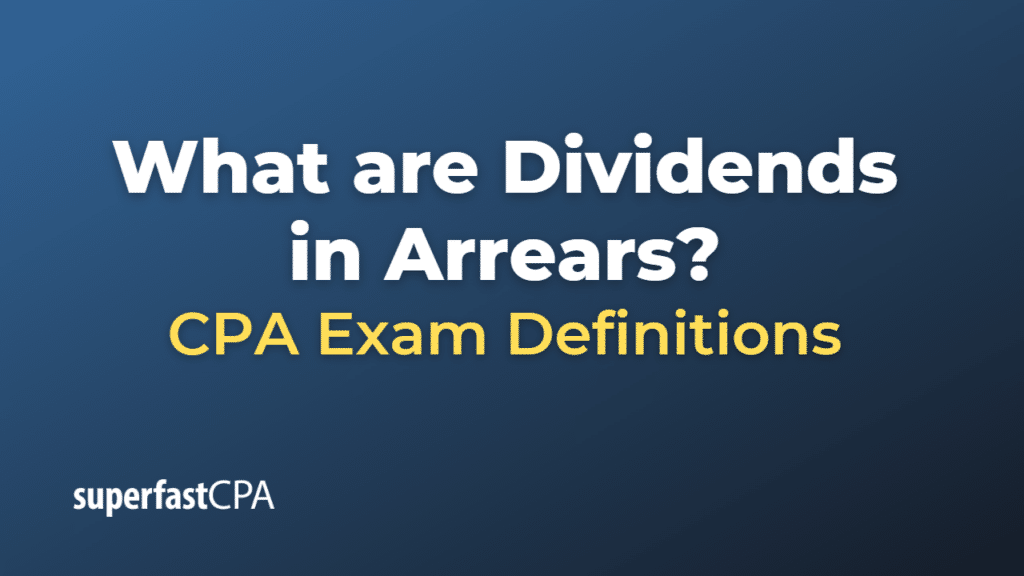Dividends in Arrears
“Dividends in arrears” are dividends that a corporation owes to its shareholders but has not yet paid. This term is most commonly used in relation to cumulative preferred stock.
Preferred stock is a type of equity (ownership interest) in a company which has a higher claim on the company’s income and assets than common stock. Preferred shareholders generally receive dividends before common shareholders and these dividends tend to be a fixed amount.
One feature of some preferred stocks is that they are “cumulative.” If the company is unable to pay its dividend in a given period, the dividend is not simply forgotten. Instead, it accumulates and is referred to as “in arrears.” When the company is able to pay dividends again, it must first pay any dividends in arrears before paying dividends to common stockholders.
For example, let’s say Company D has issued cumulative preferred stock with a fixed annual dividend of $5 per share. If, due to financial difficulties, the company is unable to pay the dividend for two years, it would have dividends in arrears of $10 per share ($5 per share * 2 years). Once the company’s financial situation improves, it must pay the $10 per share in arrears before any dividends can be paid to common stockholders.
Non-cumulative preferred stock, on the other hand, does not have this feature. If the company cannot pay the dividend in a given period, the dividend is lost and does not accumulate.
It’s important to note that while preferred stock usually has this dividend feature, it does not generally come with voting rights in the company, unlike common stock.
Example of Dividends in Arrears
Company E has issued cumulative preferred stock with a stated annual dividend of $2 per share. Due to a challenging business environment, the company is unable to pay this dividend for three years.
The missed dividends accumulate over this period. Therefore, for each share of preferred stock, there are dividends in arrears of $6 ($2 per year * 3 years).
Now, let’s assume that in the fourth year, Company E’s financial situation improves, and the company decides to pay dividends again.
Before any dividends can be paid to common shareholders or to current preferred dividends, the dividends in arrears must be paid first.
So, the holders of the cumulative preferred stock would first receive the $6 per share in dividends in arrears. After that, if the company chooses to pay the current year’s dividend on the preferred stock, those shareholders would receive an additional $2 per share. Only then could dividends be distributed to common shareholders.
So in this scenario, a cumulative preferred shareholder would receive $8 in total for the fourth year ($6 of dividends in arrears + $2 of the current year’s dividend) before any payments are made to common shareholders.
This illustrates the advantage of cumulative preferred stock for income-focused investors. Even if a company goes through financial difficulties and has to suspend dividends, any missed dividends on cumulative preferred shares will accumulate and must be paid before any dividends can be paid to common shareholders.













